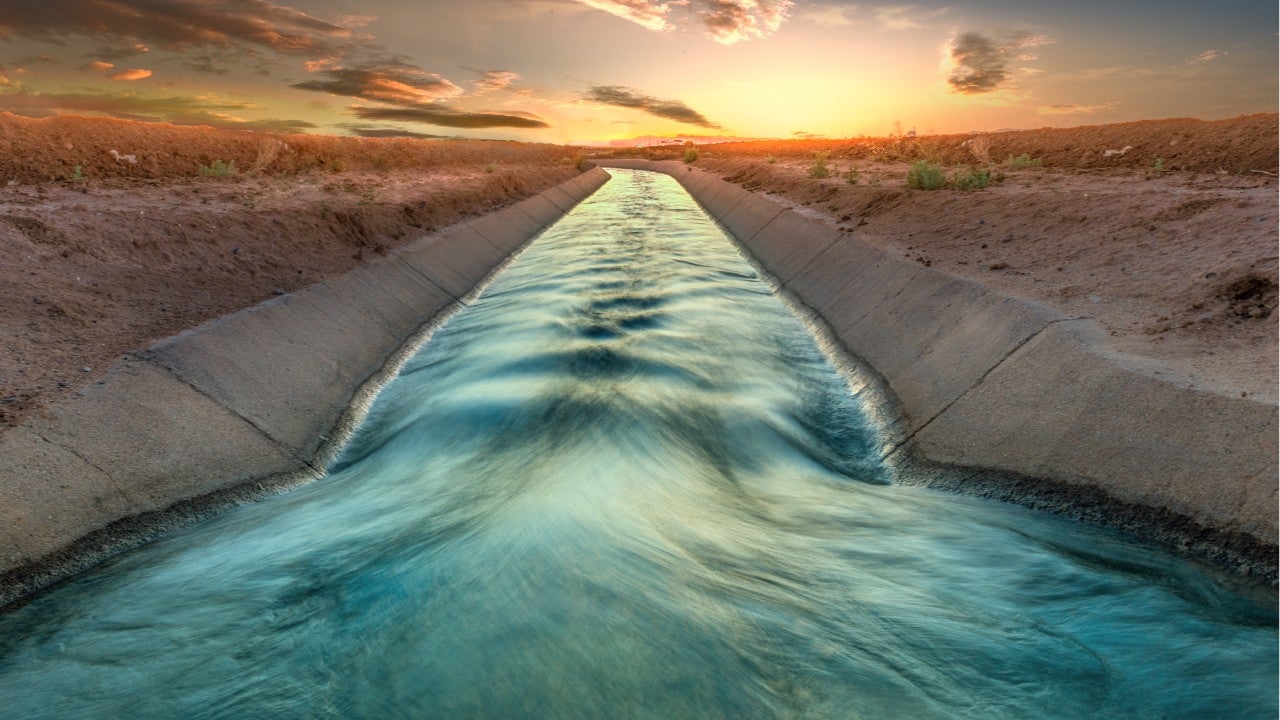Phoenix launches a Citywide food drive to assist residents experiencing food insecurity during the holidays.
Phoenix Water Services Drought Management
The Phoenix Water Services Department is committed to ensuring a reliable water supply, even during drought conditions. Through strategic planning, conservation programs, and innovative water management, we work to protect our water resources and support the community’s long-term needs. Learn how drought impacts Phoenix and what actions we take to secure our water future.

Long-Term Challenge
Drought is a long-term challenge in the desert Southwest, but Phoenix Water Services has a comprehensive plan to ensure water reliability now and into the future. Our approach includes:
- Drought Management Plan: Learn about our strategies for managing drought conditions.
- Water Resource Planning: Discover how we secure and manage water supplies for long-term sustainability.
- Conservation Programs: Explore ways you can help by reducing water use at home and work.
Together, we can protect Phoenix’s water future through smart planning and community action.
Making Sure There is Water for the Future and Beyond
The City of Phoenix’s reliable water supply remains strong, despite long-term drought conditions in the desert. The City’s longstanding commitment to strategic water management, a diverse portfolio, and water conservation efforts protects residents during drier times. Additionally, the State of Arizona's innovative Groundwater Management Act allows Phoenix to establish long-range planning for 100 years and beyond through the Assured Water Supply Program. This program enables the City to balance economic growth and long-term water resources.
Our water supply doesn’t rely on rainfall, rather snow melt, from the mountains north and east of the Valley. The City uses nearly 60% of water from the Salt and Verde Rivers which is delivered by the Salt River Project (SRP) and 40% of water from the Colorado River which is delivered by the Central Arizona Project (CAP). Phoenix uses a small portion of groundwater (about 2%) and recycles nearly all its highly treated wastewater to be used for:
- Golf courses
- Parks
- Non-edible crops
- Tres Rios Wetlands
- Recharging groundwater aquifers
- Cooling purposes at the Palo Verde Nuclear Generating Station
Phoenix holds high-priority rights to the use of surface water supplies, making them extremely reliable. Over the past century, Phoenix has taken proactive measures to secure additional surface water rights (through various purchases, leases and infrastructure development projects), which further enhances the City’s water resources.
Planning for Drought
In 1990, the City of Phoenix adopted a Drought Management Plan under Phoenix City Code (Chapter 37, Sections 121 through 130.2) to prepare for potential shortages. In June 2022, due to water levels dropping to historic lows at both Lakes Mead and Powell, the water services director activated the Drought Management Plan, declaring a Stage 1 Water Alert. This means insufficient water supply appears likely due to the water system or supply limitations or structural failure or when a catastrophic incident threatens the existing water supply or water delivery system. Under a Stage 1 Water Alert, the Water Services Department triggers intensive public education to help residents understand the importance of voluntary water conservation. City staff also directs more resources to enforce all existing City codes that impact water use and waste.
If in the future, drought restrictions are required, residents would be notified through robust communications and restrictions would be phased in and initially focused on outdoor water use and water waste. Restrictions might include watering on certain days, banning the use of outdoor water features, and stringent enforcement of water wasting laws. More severe restrictions may include using child safe pool covers to reduce evaporation, banning turf irrigation (letting lawns go brown), and banning car washing. A drought surcharge could also be imposed.
Managing Phoenix’s Water Supply
As the first Valley city to adopt a Drought Management Plan, Phoenix also maintains a Water Resources Plan that is updated every five years and Water Infrastructure Master Plans that are updated annually. As part of the development of the Water Resources Plan, Phoenix rigorously analyzes drought scenarios that exceed the state's 100-year water supply requirement.
Along with monitoring usage and working with its regional partners, Phoenix continues to adopt effective water supply standards, improve groundwater capacity to supplement its surface water supply from snowmelt, and expand the use of highly treated wastewater, or reclaimed water.
During years when adequate water supplies are available, the city also has been banking water. This is done by storing excess water in underground aquifers. If water restrictions are necessary, this water will be pumped back up and used as a supply to meet demand.
Embracing a Culture of Conservation
Water conservation is everyone’s individual responsibility. Residents have embraced the Culture of Conservation in Phoenix by significantly reducing water use over the past 30 years despite a growth in population. You can take simple, actionable steps to reduce water use and save money like watering efficiently outdoors, for example.
Take the Phoenix Save Water Pledge today and join us in this crucial effort to use water efficiently. For more water saving tips, visit our Save Water page.
More to Explore
-
FAQ
The City of Phoenix Water Services Department answers frequently asked questions about water and wastewater services.
-
Drought and Climate Change
Explore how drought and climate change impact water supply and conservation efforts in Phoenix, and discover strategies for sustainable resource management.
-
Conservation Assistance
Discover water-saving tips and resources with Phoenix's Conservation Assistance program to help you conserve water effectively and sustainably.
-
2021 Drought Management Plan
Learn how the City manages supply and demand during a water shortage.
-
2021 Water Resource Plan
Learn how the City plans to meet your water needs.